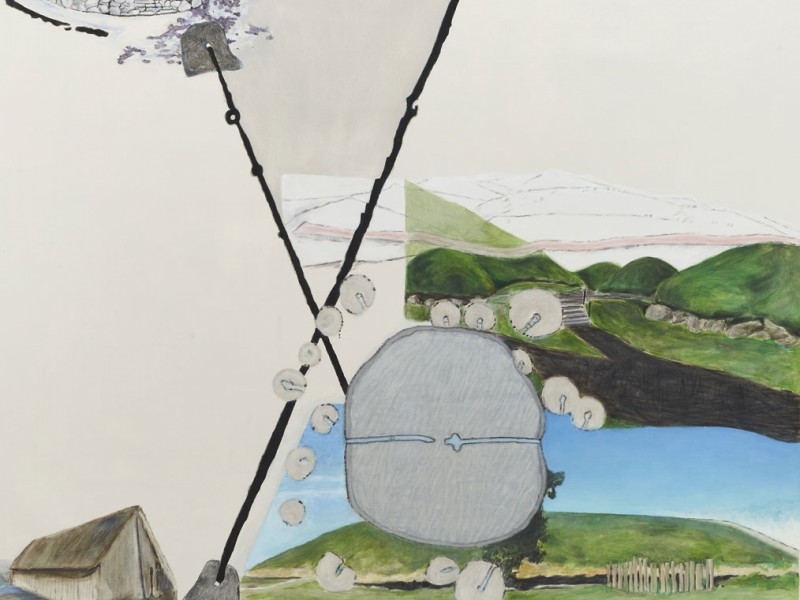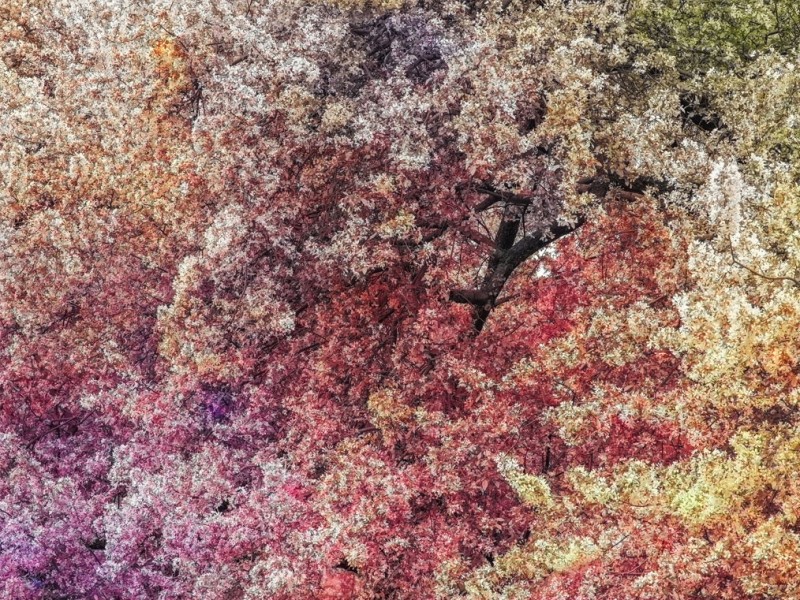For the online iteration of Frieze London 2020, Pace Gallery presents a selection of abstract sculptures that brings together four leading women artists from the gallery’s contemporary programme: Lynda Benglis, Torkwase Dyson, Sonia Gomes and Arlene Shechet.
The fair will run from 8 to 16 October 2020 on Frieze’s virtual platforms and from 5 October on Pace’s website, accompanied by the gallery’s first London presentation of work by these artists from 5 to 17 October in an intimate display at 6 Burlington Gardens.
Featuring exemplary works ranging from 1972 to 2020 by four seminal women working across generations, the presentation showcases five abstract sculptures in the gallery and an additional five works exclusively online, each characterized by freewheeling experimentation and a playful approach to materiality.
The embrace of flowing forms, colour, and sensual surfaces plays a large part in Lynda Benglis’s continuous investigation of the sensory experiences of making and viewing. Broken Favor II, 2015-16 and Embrazos, 2016-17 exemplify the artist’s exuberant engagement with shape, colour, and material. Quartered Meteor, 1969, cast 1975,is currently on view at Tate Liverpool. The piece is highlighted in the museum’s Constellation series and will remain on display until January 17, 2021.
Torkwase Dyson’s multidisciplinary approach to artmaking interrogates historical and existing infrastructure and architecture, particularly how Black and brown bodies compose, perceive, and negotiate space. Dyson’s poetics of form and composition offers an approach to abstraction that conveys a self-determination and spatial discovery in phenomenological gestures. The artist joined Pace Gallery in January of 2020, and her work is the subject of a solo exhibition at the New Orleans Museum of Art on view through December 31, 2020.
Juxtaposing tensile and slack forms, Sonia Gomes’s contorted sculptures exude a corporeality and dynamism that she attributes to her love of popular Brazilian dances. At the same time, her work’s vitality evokes the enigmatic animism of sacred objects used in the spiritual practices of Brazil’s African diaspora—rites that the artist witnessed her grandmother, a shaman, perform during her childhood.
Rich in idiosyncrasies, Arlene Shechet’s latest work combines disparate media, from ceramics to wood and metalwork, with playfully ambiguous titles that prompt endless associations. The physical presentation will include The Crown Jewel, a multi-tiered, totemic sculpture from 2020. The liveliness involved in any encounter with Shechet’s sculptures suggests the sense of hope she finds in the continued possibilities and pleasures of communicating through art. Despite their disparate oeuvres and backgrounds, these artists are united by their unorthodox choices of humble material and a capacity to balance multiple media within a single composition.
In a rich dialogue, Benglis’s works, combine chicken wire, glitter, beeswax and mesh giving rise to organic abstractions, while Shechet creates her precarious monuments from unexpected marriages of ceramic, hardwood, and metal. Dyson and Gomes both incorporate wood and string into their sculptures, though to very different ends: Dyson harnesses these media to produce spatially dynamic, geometric forms as Gomes twists and layers them to animate sacred domestic objects. Through their non-hierarchical use of material, these artists address, challenge, and question the gendered associations of ‘craft’ and ‘fine art’ classifications. In Western art history, sculpture in particular has traditionally been coded as masculine, stoic, and static; but in these women’s hands, the art form becomes porous, flexible, or fluid, wholly reimagined.
Materiality extends to colour and texture, and these four artists are also connected by their shared emphasis on surface, as seen in the opaque black of Dyson’s wall-mounted sculpture, Benglis’s metallic sparkles, Gomes’s webs of interwoven brightly coloured fabric, and Shechet’s pairing of super saturated glazes with raw wood. For some of these artists, the use of colour also takes on political connotations; Dyson’s use of unmodulated black paint speaks to her exploration of the ways in which space is perceived and negotiated, particularly by Black and brown bodies. Likewise, Sonia Gomes’s bright recycled fabric engages with the environmental impact and wastefulness of Brazil’s textile industry. There is a tantalizing tactility to these artworks that is, in part, due to the carefully constructed tension between soft and hard, solid and diaphanous, organic and plastic. The presence of the artist’s hand in each work acknowledges the processes and techniques behind the creation of the artwork.
For more visit: pacegallery.com
Related Features
-
634
-
-
-

